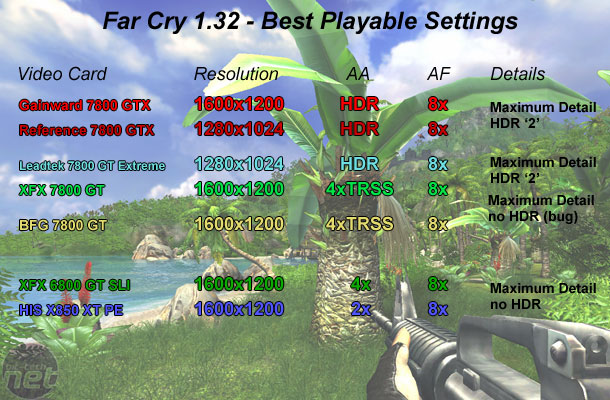Leadtek 7800 GT and ForceWare 78.03
September 29, 2005 | 17:40

Far Cry
Publisher: UbisoftWe used the full retail version of Far Cry patched to version 1.32. We did a manual run through of a section of the Factory level, which is both indoors and outdoors - the majority of our manual run through is taken from the start of the level, which is all outdoors. We also played through a section of the Fort level to ensure that our settings were playable in other graphic-intensive environments.
Far Cry was the first game to implement a High-Dynamic Range Lighting technique, based on the OpenEXR file format. The format allows all video cards with an FP16 frame buffer and support for FP16 blending to make use of the new lighting technique. At the moment, this method of HDR is only supported by NVIDIA's hardware, but we fully expect ATI's upcoming hardware to have support for FP16 blending and FP16 frame buffers.
Anti-Aliasing and Anisotropic Filtering were controlled from inside the game, and thus we left the drivers set to "Application Controlled".
Below is a table of the best-playable settings that we found best for each video card configuration. In this title, we found that 25 to 30 frames per second minimum and a target of 45 frames per second (or higher) to be the average frame rate in our manual run through. We found that this delivered a smooth and fluid gaming experience across the rest of the title, which were slightly less graphic intense than our manual run through.

We are pleased to say that this bug is gone now, so it is possible to play Far Cry on a single GeForce 7800 GT with HDR turned on. We found that 1280x1024 0xAA 8xAF with HDR set to '2' was completely playable in this title with the frame rate in our manual run through never dropping below 30 frames per second.

MSI MPG Velox 100R Chassis Review
October 14 2021 | 15:04







Want to comment? Please log in.